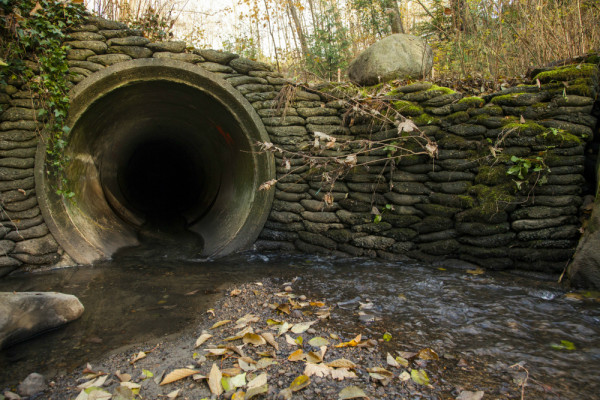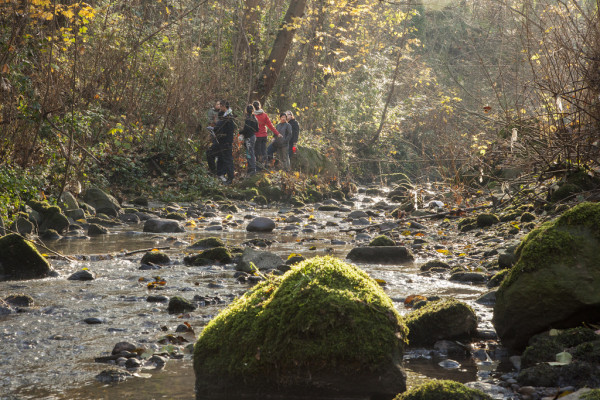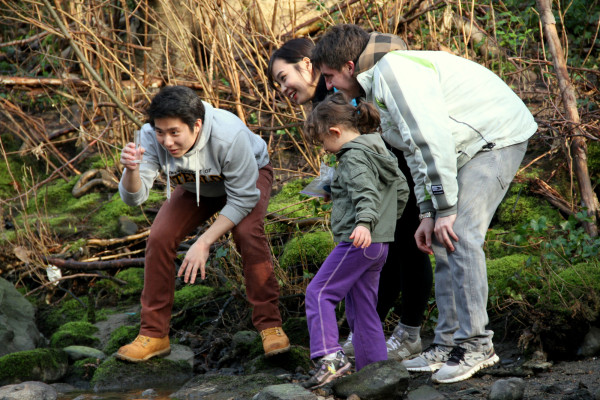Water, water everywhere, but not a drop to….see?
Across the vast breadth of Canada, we are rich with varied landscapes, each with its own unique characteristics. Water links these landscapes together; flowing from mountain top to valley bottom, from lake to seaway, from wetland to river to northern ocean and through our cities. Guest blogger Dana McDonald from Evergreen works through the Uncover Your Creeks program to rehabilitate urban creeks in Vancouver and Toronto, all funded by WWF’s Loblaw Water Fund.
Written by Dana McDonald, Greenspace Program Manager, Evergreen BC.
A large percentage – over 80 per cent – of Canadians live in our urban centres. We spend most of our time moving about paved surfaces, in and out of buildings, connecting only with water that reaches us through pipes and disappears out of sight when we’re done with it. The connections we once had to water through fishing for dinner, babbling backyard brooks and homestead ponds have been washed away by the forward march of city life.
Within the boundaries of the City of Vancouver, there were once over 50 salmon-bearing streams. Annual salmon runs were some of the richest in the world, supporting communities, wildlife and essential ecosystem cycles. As the city was developed, the streams were paved over, encapsulated in below-ground culverts, speaking only with their quiet gurgles heard through storm sewer grates. Many such streams exist in Vancouver and other Canadian and international cities (Lost Rivers Toronto, St. George Rainway, Brescia Underground) separated from the sun and vegetation by roads, soccer fields and parking lots, devoid of life and carrying a cocktail of urban contaminants.
Through the efforts of dedicated watershed stewards and municipal champions, some streams have been returned to the surface through a process called daylighting, literally, returning the stream to the light of day. This process uncovers streams from beneath our cities, allows citizens to interact with, and observe streams, and provides viable stream shoreline habitat for urban wildlife.
In spring of 2013, Evergreen launched the Uncover Your Creeks program in Vancouver. We have been fortunate to work with local governments, schools, community groups, other non-profit organizations volunteers and volunteers – watershed stewards – from around the Lower Mainland to remove invasive plants, introduce native plants and collect water quality samples; all in the name of healthy urban watersheds. Through this work, we’re providing volunteers with the skills and knowledge they need to steward their watersheds, share their knowledge with neighbours, and be part of a water-conscious community.
Uncover Your Creeks has also just launched in the Greater Toronto Area. Similar efforts in some of Toronto’s urban streams are bringing volunteers from around the region to the banks of forgotten urban water systems.
You can find out more by visiting www.evergreen.ca or www.uncoveryourcreeks.ca.
Evergreen is a national not-for-profit dedicated to inspiring action to green cities. Its Uncover Your Creeks program is generously supported by WWF’s Loblaw Water Fund, the HSBC Water Programme, the Real Estate Foundation of British Columbia and the Intact Foundation.




